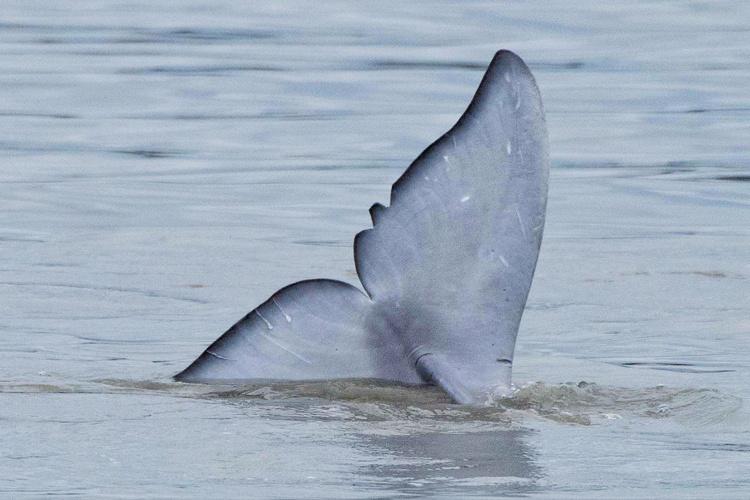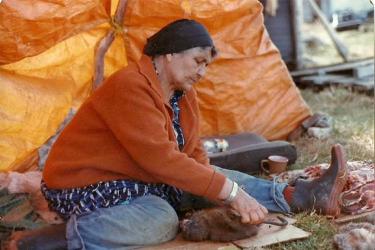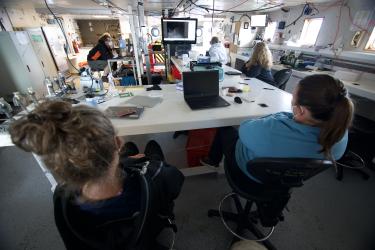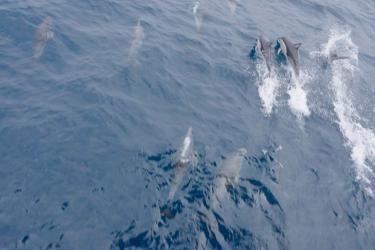Beluga whales use sound to find prey, communicate, and navigate. High levels of human-generated noise may interfere with their ability to find and capture prey. NOAA Fisheries scientists are part of a team of scientists led by the Alaska Department of Fish and Game who are engaged in continuing research to learn more about how beluga whales communicate and how human-generated sound affects their ability to do so successfully. Passive acoustic monitoring will be used to detect where belugas forage, classify noise sources, and determine whether noise may displace belugas from feeding areas.
The objective of the initial fieldwork, which begins on September 17, is to deploy acoustic moorings in potential winter feeding areas for Cook Inlet beluga whales. Over the course of 3 weeks, 11 mooring will be placed at different locations throughout the inlet. The plan will be to return in the spring of 2018 to recover all the moorings, collect the sound recordings for analysis, and refurbish and redeploy the moorings.
Over the course of 3 weeks, Manuel Castellote will be working with partners from the Dep. of Defense - Joint Base Elmendorf Richardson in Anchorage and the Alaska Department of Fish and Game (ADFG) to carry out this important survey.
Once numbering around 1,300 animals and ranging throughout Cook Inlet, today, there are only 340 belugas left concentrated in the upper inlet.
Learn more about this study and other NOAA-supported research
Additional Resources
Meet the Bloggers

Manuel Castellote
Manuel Castellote, NOAA affiliate, is a bioacoustician at the Alaska Fisheries Science Center’s Marine Mammal Laboratory. Manuel joined the Lab’s Cetacean Assessment and Ecology program in 2010 after completing his Ph.D. in Spain, where he studied the effects of shipping and seismic survey noise on fin whale singing behavior.

Mandy Keogh
Mandy Keogh earned her Ph.D. at the University of Alaska Fairbanks in 2011 following which she was a research Scientist at Mystic Aquarium and conducted research on belugas maintained at the aquarium as well as with the Bristol Bay beluga population. Mandy returned to Alaska as a Wildlife Physiologist with the Alaska Department of Fish and Game's Marine Mammal Program in 2015. Mandy's current research focuses on Steller sea lions, northern fur seals, and Cook Inlet belugas.

Justin Jenniges
Justin Jenniges is a Fish & Wildlife Technician with the Alaska Department of Fish & Game. He has been assisting Scientists from a variety of Federal, State, and Non-governmental organizations with west coast marine mammal research since 2002. His interests include eating bacon, watching television, and coloring books.
This project is part of two 3-year projects being conducted with annual funding by the NOAA Endangered Species Act Section 6 Program. Georgia Aquarium and John G. Shedd Aquarium have provided matching financial support and will develop education programs based on both projects. Department of Fish and Game marine mammal scientists will lead the research in collaboration with Alaska Fisheries Science Center Marine Mammal Laboratory, the University of Alaska Fairbanks, the University of Washington, Harbor Branch Oceanographic Institute at Florida Atlantic University, and the Cook Inlet Beluga Whale Photo-ID Project (at LGL Alaska Research Associates, Inc). Samples and data were also provided by the Marine Mammal Health and Stranding Response Program.



